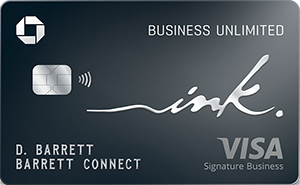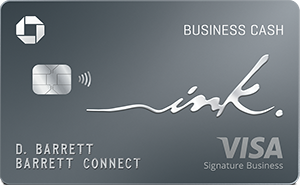Are Unreimbursed Employee Expenses Deductible This Year?
When my friend doesn’t pay me back for a meal we promised to split, it’s called losing a friend. When my employer doesn’t repay a business expense I covered, it’s called an unreimbursed employee expense.
Overview: What are unreimbursed employee expenses?
From providing a work computer to each employee to covering a hotel on a business trip, it’s best practice to keep your employees from reaching into their wallets for necessary business expenses. When your employees pay out of pocket for expenses a business ought to reimburse, it’s an unreimbursed employee expense.
Unlike employees, independent contractors and other self-employed workers pay their own way. With the help of tax software, self-employed people can easily deduct ordinary and necessary business expenses.
There’s no overarching federal law that requires employers to reimburse their employees for incurring business expenses. However, the Fair Labor Standards Act (FLSA) kickback rule dictates that employees cannot incur business expenses that drag their earnings below the applicable minimum wage. Also, reimbursement is the right thing to do.
Are unreimbursed employee expenses deductible in 2020?
The vast majority of W-2 workers can’t deduct unreimbursed employee expenses in 2020. The Tax Cut and Jobs Act (TCJA) eliminated unreimbursed employee expense deductions for all but a handful of protected groups.
The TCJA restriction lasts until 2026, when miscellaneous itemized deductions are slated to return for all employees.
Why a Business Credit Card Could Transform Your Small Business
These business credit cards that offer a convenient and efficient way to separate personal and business expenses, simplifying accounting and tax reporting.
Additionally, business cards can provide valuable perks such as rewards points, cashback, and expense tracking tools, enhancing financial management and the potential to help save money in the long run.
| Offer | Our Rating | Welcome Offer | Rewards Program | APR |
|---|---|---|---|---|

Ink Business Unlimited® Credit Card
Apply Now for Ink Business Unlimited® Credit Card
On Chase's Secure Website. |
Rating image, 4.50 out of 5 stars.
4.50/5
Our ratings are based on a 5 star scale.
5 stars equals Best.
4 stars equals Excellent.
3 stars equals Good.
2 stars equals Fair.
1 star equals Poor.
We want your money to work harder for you. Which is why our ratings are biased toward offers that deliver versatility while cutting out-of-pocket costs.
|
Earn $900 bonus cash back Earn $900 bonus cash back after you spend $6,000 on purchases in the first 3 months from account opening. | Earn unlimited 1.5% cash back on every purchase Earn unlimited 1.5% cash back on every purchase made for your business |
Intro: 0% Intro APR on Purchases Purchases: 0% Intro APR on Purchases, 12 months Balance Transfers: N/A Regular: 18.49% - 24.49% Variable |

Ink Business Cash® Credit Card
Apply Now for Ink Business Cash® Credit Card
On Chase's Secure Website. |
Rating image, 4.50 out of 5 stars.
4.50/5
Our ratings are based on a 5 star scale.
5 stars equals Best.
4 stars equals Excellent.
3 stars equals Good.
2 stars equals Fair.
1 star equals Poor.
We want your money to work harder for you. Which is why our ratings are biased toward offers that deliver versatility while cutting out-of-pocket costs.
|
Earn up to $750 bonus cash back Earn $350 when you spend $3,000 on purchases in the first three months and an additional $400 when you spend $6,000 on purchases in the first six months after account opening. | Earn 5% cash back in select business categories Earn 5% cash back on the first $25,000 spent in combined purchases at office supply stores and on internet, cable and phone services each account anniversary year. Earn 2% cash back on the first $25,000 spent in combined purchases at gas stations and restaurants each account anniversary year. Earn 1% cash back on all other card purchases with no limit to the amount you can earn. |
Intro: 0% Intro APR on Purchases Purchases: 0% Intro APR on Purchases, 12 months Balance Transfers: N/A Regular: 18.49% - 24.49% Variable |
Unreimbursed employee expenses don’t apply to those who aren’t classified as employees. Therefore, independent contractors and other business owners can deduct ordinary and necessary business expenses.
You can continue to deduct unreimbursed employee expenses if you are part of one of the following groups:
- Armed Forces reservists: Members of a reserve component of the military can keep deducting unreimbursed expenses.
- Qualified performing artists: This definition is narrow. The performing artist -- a musician or actor -- needs to have at least two employers in a year, earn at least $200 per employer, and report $16,000 or less in adjusted gross income. Earnings made any other way cannot exceed 10% of the person’s total earnings.
- Fee-basis state or local government officials: These cases are rare. Those employed by a state government and are paid by fees, at least in part, fall into this category. A salaried government official likely wouldn’t qualify.
- Employees with impairment-related work expenses: Employees with physical or mental disabilities can deduct expenses they incur to be able to work. Expenses could include the cost of attendants and equipment necessary to do their jobs.
Educators can’t deduct all unreimbursed employee expenses, but they can deduct up to $250 in certain expenses incurred for teaching. See more on this below.
IRS Publication 529 defines each group in more detail.
What are classified as unreimbursed employee expenses?
Unreimbursed employee expenses encompass job-related expenses that an employee covers. The IRS explicitly excludes daily commuting expenses, but most other expenses count.
Educator expenses
The educator expense deduction marks one of the few unreimbursed employee expenses that taxpayers can still deduct on their returns. A teacher, instructor, counselor, principal, or aide who teaches any level from kindergarten to 12th grade can deduct up to $250 in qualified unreimbursed expenses.
Qualified expenses include books, supplies, computer equipment, software, and professional development courses. Check out IRS Topic No. 458 for more details.
Business travel
While your daily commuting costs don’t qualify as an unreimbursed employee expense, longer business trips do apply.
Client site visits and hotel stays for overnight business trips count as unreimbursed employee expenses when your employer doesn’t offer mileage reimbursement, a per-diem allowance, or reimbursement of your actual expenses. Parking fees, tolls, and travel by bus and train also qualify as business travel expenses.
Meals qualify if they were related to a business trip or needed for a business purpose such as a client meeting. However, you can only deduct 50% of unreimbursed meals costs.
Tools and supplies
When used for essential work, your tools and supplies may count as unreimbursed employee expenses.
Professional organization dues
Many businesses reimburse their employees for participating in professional societies and unions. When your employer doesn’t pay or reimburse you for being in the local society for your trade, your dues count as an unreimbursed employee expense.
Work clothes and uniforms
Protective clothing and uniforms necessary for work count as unreimbursed employee expenses. Your fancy suit and fine leather shoes aren’t considered unreimbursed employee expenses, but steel-toe boots and safety glasses do qualify.
Performing artists can deduct the cost of their self-funded costumes when the clothing is “not suitable for everyday wear,” according to the IRS. It’s unclear where the line is between suitable and unsuitable for daily wear, but maybe you can add a few extra rhinestones to that jacket just in case.
How to claim unreimbursed business expenses
Members of the groups qualified to deduct unreimbursed business expenses should file Form 2106 with their personal tax returns. Limitations on the deduction depend on your worker classification and the nature of your expenses. Consult with a tax professional before filing Form 2106.
The form requires you to enter the total amount of business expenses you paid out of pocket, including any portion your employer reimbursed. It’s critical to keep your receipts even after your employer reimbursed you.
Unlike other unreimbursed employee expenses, the educator expense deduction goes on Form 1040 Schedule 1, line 10.
Businesses can deduct reimbursed expenses
Businesses of any size should make sure employees aren’t dipping into their own funds to help keep the company running. When you reimburse employees for expenses they incur on your behalf, you can deduct it on your business taxes, lowering your taxable income.
Our Research Expert
We're firm believers in the Golden Rule, which is why editorial opinions are ours alone and have not been previously reviewed, approved, or endorsed by included advertisers. The Ascent, a Motley Fool service, does not cover all offers on the market. The Ascent has a dedicated team of editors and analysts focused on personal finance, and they follow the same set of publishing standards and editorial integrity while maintaining professional separation from the analysts and editors on other Motley Fool brands.
Related Articles
View All Articles